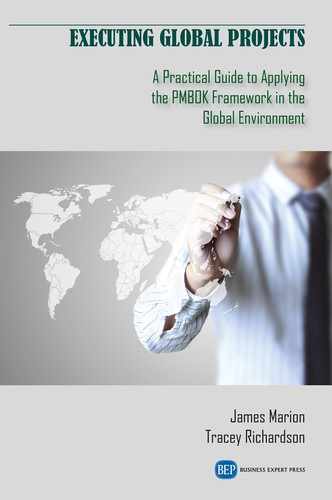How would a project manager, a sponsor, or a client assess the capability of a project team to plan and execute a global project plan? To begin with, a project team that has experience in managing at least one global project is likely to be more successful than a team that has not previously managed projects in the global environment. However, it may also be the case that the previous project may have succeeded by following ad hoc methods rather than a process-based approach. Because of this, future success is not assured. To improve chances of success, both the client and the sponsoring organization of the project must determine if the project team as constituted is capable of developing and executing a project plan where significant political, economic, social, and technological (PEST) differences exist. An accurate assessment of the global capability of the project team involves the collection and comparison of multiple sources of data to provide a holistic view. Methods for doing this include the following:
Track Record
The global track record assesses previous global projects in terms of the number of projects planned and executed, the scale of the project, and the metrics associated with managing the schedule, budget, and scope given the many global challenges faced by the team. This data may be collected from the project team, or, if in the case of an internal team, pulled from the lessons-learned database (Figure 14.1).
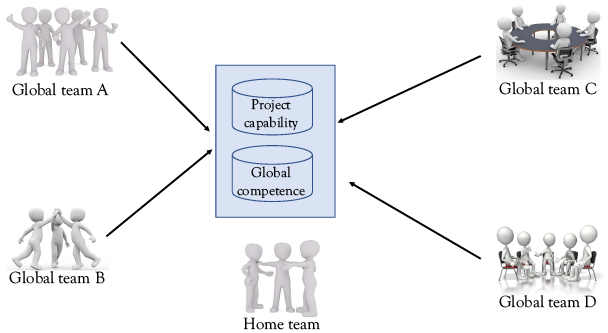
Figure 14.1 Global team track record database
Project Documentation Examination
In addition to the examination of the project track record across several global projects, significant information may be gleaned from the study of project documents sampled from one or more projects previously carried out. Of special interest is the risk register and the degree to which global project factors were addressed. Further, the level of sophistication of the stakeholder analysis and the communications plan would suggest that the team has a strong grasp of the scale of global stakeholders as well as the intensity and complexity of stakeholder engagement and communication (Figure 14.2).
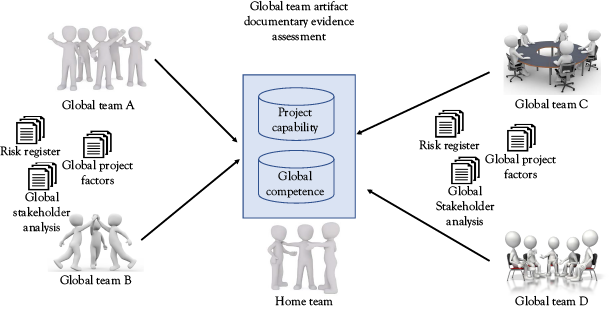
Figure 14.2 Global team artifact assessment
Client Reports
In case where the team has developed and managed previous projects, the team may be evaluated by reaching out to previous clients of the project team. Questions to clients of the project team could include the following:
- Did the team deliver according to your schedule, budget, and scope expectations?
- Did the team successfully interact with client team members and stakeholders from other countries?
- How well did the project team keep you informed?
- Did the team communicate effectively with stakeholders?
- Did the team face unexpected risks or financial/regulatory issues?
These are a few examples of the type of questions that would be important to know prior to assigning a global project to the team. Ultimately the sponsoring organization would seek to understand the degree to which the team struggled with managing global project factors.
Internal and External Stakeholder Interviews
Stakeholders within and without the project team, the client, and sponsoring organization can be excellent sources of information regarding the level of expertise of the project team. It is important, however, to seek out stakeholder groups that are likely to have contrasting views on the performance of the project team. For example, not all stakeholders will prove to be supportive of the project team. This is especially the case within large organizations that fund many different project teams as a means of developing and delivering products and executing strategy. A group of stakeholders from a different project team that is competing for funding is likely to be highly critical of other project teams. By way of contrast, other groups of stakeholders within the sponsoring organization and the client may strongly favor the project team and speak highly of its previous track record in managing global projects. It should be kept in mind, however, that the strong and often contrasting opinions of each stakeholder group may reflect the truth of the matter only imperfectly. It is up to the assessor of project team to weigh each source of evidence so that a realistic and accurate view of the project team emerges (Figure 14.3).
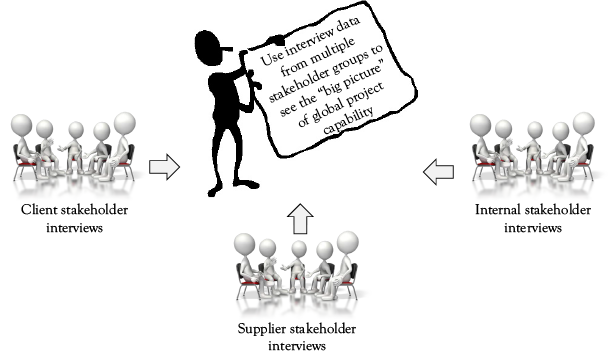
Figure 14.3 Stakeholder interview data collection
Survey Instrument
An overall assessment of global project capability would not be complete without the collection and analysis of significant data collected via a survey instrument. An electronic survey instrument allows for distribution to a large population that includes all stakeholder groups currently in place as well as stakeholders associated with previous global projects. It is useful, however, to use the survey to develop insights into the internal state of readiness of the project team and sponsoring organization, and as well, develop a modified version of the survey to capture the opinion of external stakeholders including the client. An assessment survey may also be used to capture demographic information that identifies the stakeholder groups to which each survey respondent belongs. In this way, the survey data may be used to compare the differences in perceptions of different stakeholder groups regarding the readiness of the sponsoring organization and the project team to undertake global projects.
Although the survey instrument assesses each element of the global project scorecard, the survey first seeks to assess the overall level of global project process maturity using the following series of questions:
Process Maturity Questions
The following survey questions are designed to assess the level of process maturity for managing global projects:
- The organization has defined policies for chartering global projects.
- Strongly Agree
- □ Agree
- □ Neither Agree nor Disagree
- □ Disagree
- □ Strongly Disagree
- The organization has defined processes for planning and executing global projects.
- □ Strongly Agree
- □ Agree
- □ Neither Agree nor Disagree
- □ Disagree
- □ Strongly Disagree
- The organization’s global project processes are widely known throughout the organization.
- □ Strongly Agree
- □ Agree
- □ Neither Agree nor Disagree
- □ Disagree
- □ Strongly Disagree
- The organization’s global project processes are consistently used throughout the organization.
- □ Strongly Agree
- □ Agree
- □ Neither Agree nor Disagree
- □ Disagree
- □ Strongly Disagree
- The effectiveness of the organization’s global project processes is measured using metrics.
- □ Strongly Agree
- □ Agree
- □ Neither Agree nor Disagree
- □ Disagree
- □ Strongly Disagree
- The organization’s global project processes are consistently used throughout the organization.
- □ Strongly Agree
- □ Agree
- □ Neither Agree nor Disagree
- □ Disagree
- □ Strongly Disagree
The survey is scored using 1 for “Strongly disagree” and 5 for “Strongly agree.” Based on this scoring, the level of overall process maturity is assessed as follows (Figure 14.4).

Figure 14.4 Scoring global process maturity surveys
PEST Assessment
The core of the global project scorecard assessment is associated with each of the factors that contribute to the challenge of planning and managing global projects.
I. Political
Legal/regulatory environment
- The project plan reflects an awareness of the regulatory requirement of the client country.
- □ Strongly Agree
- □ Agree
- □ Neither Agree nor Disagree
- □ Disagree
- □ Strongly Disagree
- The project plan is evaluated for its alignment with the legal framework of the client country.
- □ Strongly Agree
- □ Agree
- □ Neither Agree nor Disagree
- □ Disagree
- □ Strongly Disagree
Stability
- The project plan requires an assessment of the likelihood of disruption due to changes in government or government policy.
- □ Strongly Agree
- □ Agree
- □ Neither Agree nor Disagree
- □ Disagree
- □ Strongly Disagree
Intellectual property
- The project plan includes procedures for safeguarding designs, schematics, and source code.
- □ Strongly Agree
- □ Agree
- □ Neither Agree nor Disagree
- □ Disagree
- □ Strongly Disagree
Safety
- The project plan includes a travel policy that fosters personal safety while traveling on project business.
- □ Strongly Agree
- □ Agree
- □ Neither Agree nor Disagree
- □ Disagree
- □ Strongly Disagree
Corruption Index
- The project plan includes a plan to evaluate and respond to reported in-country corruption.
- □ Strongly Agree
- □ Agree
- □ Neither Agree nor Disagree
- □ Disagree
- □ Strongly Disagree
Overall
- The project risk register and response plan include noted political global factors.
- □ Strongly Agree
- □ Agree
- □ Neither Agree nor Disagree
- □ Disagree
- □ Strongly Disagree
II. Economic
Currency valuation and stability
- The project budget reflects past currency trends and future projections in the countries in which the project operates.
- □ Strongly Agree
- □ Agree
- □ Neither Agree nor Disagree
- □ Disagree
- □ Strongly Disagree
Inflation
- The project budget factors in inflation projections for the countries in which the project operates.
- □ Strongly Agree
- □ Agree
- □ Neither Agree nor Disagree
- □ Disagree
- □ Strongly Disagree
Taxation
- The project budget factors in taxation requirements for the countries in which the project operates.
- □ Strongly Agree
- □ Agree
- □ Neither Agree nor Disagree
- □ Disagree
- □ Strongly Disagree
- The project plan includes taxation countermeasures for the countries in which the project operates.
- □ Strongly Agree
- □ Agree
- □ Neither Agree nor Disagree
- □ Disagree
- □ Strongly Disagree
Duties
- The project budget includes import duties for the countries in which the project operates.
- □ Strongly Agree
- □ Agree
- □ Neither Agree nor Disagree
- □ Disagree
- □ Strongly Disagree
- The project plan includes plans for minimization of import duties for the countries in which the project operates.
- □ Strongly Agree
- □ Agree
- □ Neither Agree nor Disagree
- □ Disagree
- □ Strongly Disagree
Overall
- The project risk register and response plan include noted economic global factors.
- □ Strongly Agree
- □ Agree
- □ Neither Agree nor Disagree
- □ Disagree
- □ Strongly Disagree
III. Social
Crime
- The project plan includes an analysis of crime statistics for the countries in which the project operates.
- □ Strongly Agree
- □ Agree
- □ Neither Agree nor Disagree
- □ Disagree
- □ Strongly Disagree
- The project plan includes necessary precautions for criminal activity within the countries in which the project operates.
- □ Strongly Agree
- □ Agree
- □ Neither Agree nor Disagree
- □ Disagree
- □ Strongly Disagree
Human rights
- The project plan includes an examination of the human rights records for the countries in which the project operates.
- □ Strongly Agree
- □ Agree
- □ Neither Agree nor Disagree
- □ Disagree
- □ Strongly Disagree
Environment
- The project plan includes an evaluation of environmental concerns for the countries in which the project operates.
- □ Strongly Agree
- □ Agree
- □ Neither Agree nor Disagree
- □ Disagree
- □ Strongly Disagree
Customs/language/religion
- The project plan includes a SWOT analysis to assess the impact of customs, language, and religious observance for the countries in which the project operates.
- □ Strongly Agree
- □ Agree
- □ Neither Agree nor Disagree
- □ Disagree
- □ Strongly Disagree
Education
- The project plan includes an examination of the level of education in fields related to the project for the countries in which the project operates.
- □ Strongly Agree
- □ Agree
- □ Neither Agree nor Disagree
- □ Disagree
- □ Strongly Disagree
Overall
- The project risk register and response plan include noted social global factors.
- □ Strongly Agree
- □ Agree
- □ Neither Agree nor Disagree
- □ Disagree
- □ Strongly Disagree
IV. Technological
Telecommunications/connectivity
- The project plan includes an evaluation of telecommunications and connectivity availability for the countries in which the project operates.
- □ Strongly Agree
- □ Agree
- □ Neither Agree nor Disagree
- □ Disagree
- □ Strongly Disagree
Infrastructure
- The project plan includes an evaluation of the business infrastructure for the countries in which the project operates.
- □ Strongly Agree
- □ Agree
- □ Neither Agree nor Disagree
- □ Disagree
- □ Strongly Disagree
Intellectual capital
- The project plan includes an assessment of the level of available educated workforce for the countries in which the project operates.
- □ Strongly Agree
- □ Agree
- □ Neither Agree nor Disagree
- □ Disagree
- □ Strongly Disagree
Patents
- The project plan includes an examination of the number of patents secured by the countries in which the project operates.
- □ Strongly Agree
- □ Agree
- □ Neither Agree nor Disagree
- □ Disagree
- □ Strongly Disagree
High-technology exports
- The project includes an examination of the level of high-technology exports from the countries in which the project operates.
- □ Strongly Agree
- □ Agree
- □ Neither Agree nor Disagree
- □ Disagree
- □ Strongly Disagree
Overall
- The project risk register and response plan include noted technological global factors.
- □ Strongly Agree
- □ Agree
- □ Neither Agree nor Disagree
- □ Disagree
- □ Strongly Disagree
Each of the PEST elements are scored from 1 to 5 in the same manner as the overall process maturity assessment questions. Assessment results from each PEST elements fall within a spectrum with a mean score exceeding a mean of 3 indicating a minimum level of acceptable global project readiness for planning and executing global projects (Figure 14.5).
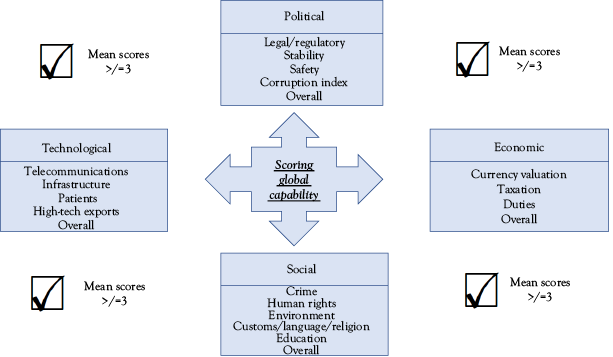
Figure 14.5 Minimum acceptable global capability scores
